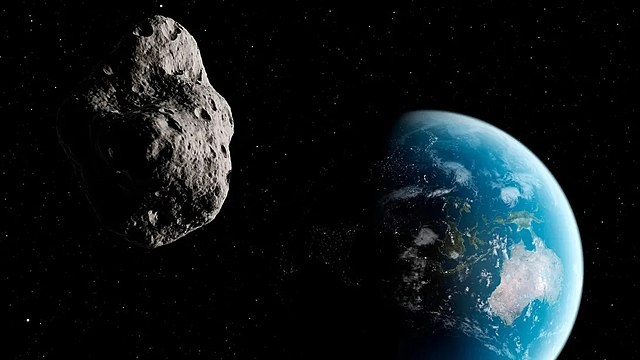
NASA confirms that a huge massive asteroid is approaching Earth in 2029. It's so big that it is wider than three football fields, but the agency clarified that it wouldn't hit Earth at least in the next decades.
Biggest Asteroid Detected Approaching Earth in 2029
The 1,100-foot wide space rock is named 99942 Apophis. A football field is 300 feet long and three football fields are 900 feet long in total. The massive asteroid, which is over 1,000 feet wide, is bigger than three football fields.
Fortunately, there is no chance it will strike this planet for at least 100 years. However, no asteroid has passed closer to Earth anything near its size in recorded history. Apophis will make a flyby on Earth on April 13, 2029, Los Angeles Times reported.
Lance Benner, a principal scientist at Jet Propulsion Laboratory (JPL), said they had never seen that large space rock approaching Earth.
The word "Close" is a relative term in the space world. The massive asteroid will pass roughly 19,000 miles (31,000 kilometers) above the Earth's surface, which is one-10th the distance to the moon.
It will not appear like a fireball across the heavens. Instead, it will be visible to the naked eye from some parts of Europe and Africa. Stargazers from Los Angeles might catch it with binoculars around 3: 30 am. on April 13.
Apophis Offers Scientists Unprecedented Opportunity
According to the experts, an asteroid strike is a disaster, but an asteroid flyby is an opportunity. Apophis will help the researchers learn how the Earth came to life and probably prevent its possible destruction in the future.
Benner said the huge space rock offers them an unprecedented opportunity to study its physical properties and learn new things they aren't aware of.
Asteroids are usually spotted years, if not decades, before they make a potential crash with our planet, giving us a better chance of planetary survival.
Paul Chodas, who manages NASA's Near-Earth Object Program Office at the Jet Propulsion Laboratory in La Cañada-Flintridge, admitted they were shocked when they discovered the massive asteroid. He said it was a "very serious" and unexpected finding. He added that it was a "rare event."
Astronomers use a color-coded warning system called the Torino Scale to measure the degree of threat from an asteroid or comet as they come near our planet in the next 100 years. Since the scale's creation in 1995, none of the 30,000 near-Earth objects discovered in the solar system ranked higher than 1 on the zero-to-10 scale. However, that was before Apophis, which received a 4 rating.
The longer the astronomers study the asteroid, the more they understand its orbit and within just a few months, they ruled out the possibility of 2029 and 2036 strikes.
Radar observations also suggested that Apophis will not strike the planet when it passes in 2068, leaving Earth safe for at least a century.
RELATED ARTICLE : NASA's DART Spacecraft Worked! Asteroid Killer Changed the Harmless Space Rock's Orbit More Than Expected
Check out more news and information on Space in Science Times.
© 2025 ScienceTimes.com All rights reserved. Do not reproduce without permission. The window to the world of Science Times.












